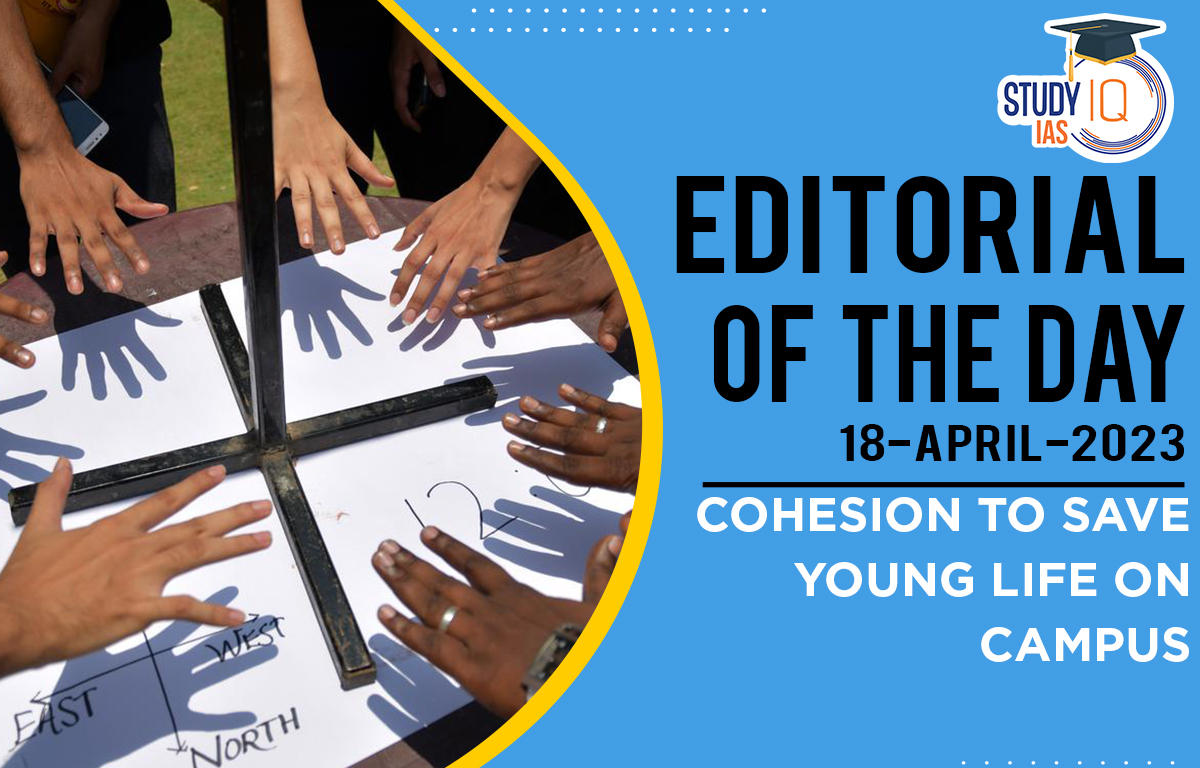Table of Contents
Context: Counseling and therapies are crucial measures, but what institutions of learning need to do is to ensure respect for academic and socio-economic diversity on their campuses.
Cohesion to Save Young Life on Campus Background
- During 2018-23, there were as many as 61 student suicides in the Indian Institutes of Technology, or IITs (33), the National Institutes of Technology, or NITs (24) and the Indian Institutes of Management (4).
- Most students were from the Scheduled Castes (SC), Scheduled Tribes (ST), Other Backward Castes (OBC) and Economically Weaker Sections (EWS).
- Marginalisation and deprivation are factors but one also finds a wide spectrum of students.

Decoding the Editorial
Formal Mechanism to Address Suicides:
- Most of the IITs, NITs and other institutions have put in place online and offline mechanisms to access personal counseling and therapies in a confidential manner.
- Apps such as Dost, Saathi, and Mitr have also been launched to access their services anonymously.
- Most of these institutions also organise awareness and sensitization programmes for students.
- A few of them have arrangements with external agencies to provide psychological counseling.
Campus Suicides still prevail due to following issues:
- Increase in Individualism:
- The campuses have become large and impersonal spaces.
- Family support is dwindling as there are more nuclear families now with working parents who are unable to provide the kind of parenting and mentoring that joint families provide.
- Early signs of emotional distress go unnoticed, unrecognized, and unaddressed.
- Highly formalized hierarchical structure of institutions:
- In institutions of higher education the system is such that there is hardly any free and fair communication between students, their seniors, teachers, and the administration.
- Teachers may hardly have the time, the inclination or even the expertise to notice and address any disturbing traits among their students.
- Lack preventive measures:
- It is only when tragedy occurs that actions are triggered, ie, an inquiry and then a prescription of remedial and preventive measures.
- The formal mechanism works most of the time during office hours, and on working days, and are often unable to respond in a prompt manner.
- Lack of professionals:
- The lack of information implies that they usually assign the task of counseling to faculty members and are yet to embrace the idea of professionally trained counselors.
- Prejudice:
- A few fringe elements on campus might be prejudicial about reservations in admission and differential fee policies.
|
A Comparative Study |
|
| USA | India |
| Universities have dedicated counseling centres with a range of psychological services such as evaluation, counseling, consultation, and therapies. | The psychological counseling services in campuses are limited to providing some physical space in a corner of the institution. |
| They are accredited by the International Accreditation of Counseling Services (IACS) and are manned by licensed psychologists, psychiatrists, clinical therapists, mental health workers and social workers. | There are hardly any standards. |
| The counselor-to-student ratio is carefully established through a combination of empirical analysis and judgments of experienced counseling directors. | There is no such ratio. There are a limited number of professionally trained psychologists and psychotherapists. |
Way Forward
It is critical to promote respect for academic and socio-economic diversity.
- Institutions must deter and curb all forms of discrimination, howsoever subtle and done even in jest.
- Institutions must be discreet about personal sensitive information.
- At times, the inability to cope with academic pressure and get good grades is linked to the category and ranks of students.
- Institutions must evolve a code of campus ethics prescribing standards and protocols of what can and cannot be discussed even in informal social settings.





















 WhatsApp
WhatsApp